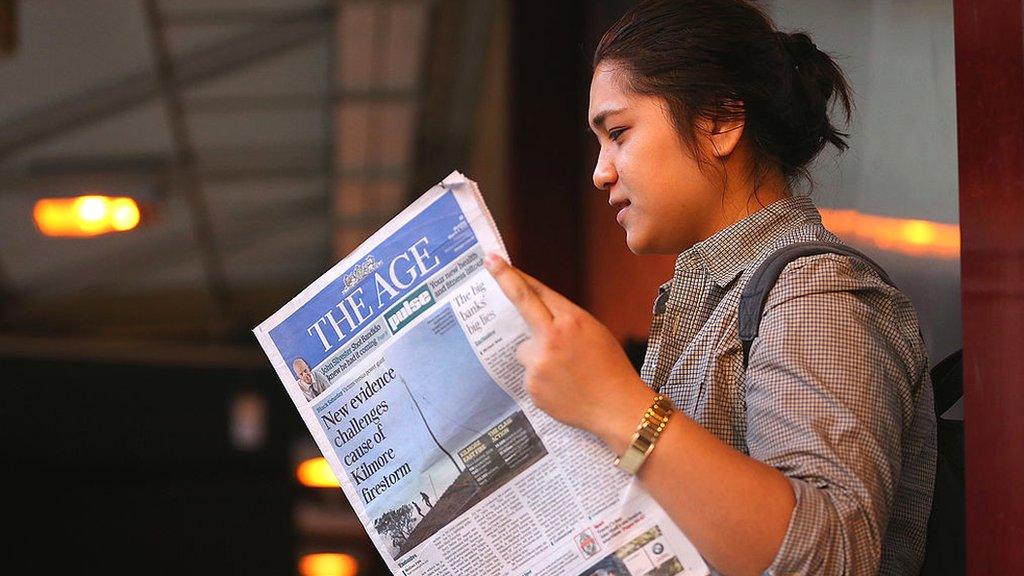Australia media guide
- Published
This page is no longer being updated. It was last updated on 14 April 2023

Australia has a lively media scene and is considered to have a relatively free press
Australia's media scene is creatively, technologically and economically advanced. There is a tradition of public broadcasting, but privately-owned TV and radio have the biggest audiences.
The ownership of print and broadcast media is concentrated. Leading conglomerates include News Corp Australia, Seven West Media and the merged Fairfax Media-Nine Entertainment group.
The Australian Broadcasting Corporation (ABC) runs national and local public radio and TV. The other main public broadcaster is the multilingual Special Broadcasting Service (SBS).
National commercial TV is dominated by three big free-to-air networks. Broadcasters must carry a minimum percentage of Australian-made programmes. Pay TV via cable, satellite and IPTV has a strong foothold.
Sports, news, game shows, imported and home-made dramas top the TV ratings. The industry has successfully exported its productions to English-speaking markets overseas.
Media freedom watchdog Reporters Without Borders says tough defamation legislation and laws on terrorism and national security have reduced the space for "demanding investigative journalism".
There were 23.3 million internet users by July 2022, comprising 90% of the population (Internetworldstats.com).
Some 18 million Australians are active social media users (We Are Social, 2019). Facebook is the most popular social platform.
Press
Herald Sun, external - Melbourne-based daily
The Australian, external - national daily
The Daily Telegraph, external - Sydney-based daily
The Courier-Mail, external - Brisbane-based daily
The West Australian, external - Perth-based daily
The Age, external - Melbourne-based daily
The Advertiser, external - Adelaide-based daily
Australian Financial Review, external - business daily
Television
ABC, external - national, public
ABC News, external - ABC's 24-hour news TV
SBS TV, external - public, multilingual
Seven Network, external - national, commercial
Nine Network, external - national, commercial
Network Ten, external - national, commercial
Sky News Australia, external - satellite/cable news network, owned by News Corp Australia
Foxtel, external - pay TV, owned by News Corp Australia and Telstra
Radio
ABC, external - public, operates speech-cultural network Radio National, ABC NewsRadio, youth network Triple J, ABC Classic FM and local services
Radio Australia, external - ABC external service, serves Asia-Pacific
SBS Radio, external - public, multilingual
Commercial Radio Australia, external - industry organisation
News agency/Online
AAP, external - Australian Associated Press
ABC News, external - public broadcaster's news site
news.com.au, external - news site owned by News Corp Australia
9News, external - news site run by Nine Network